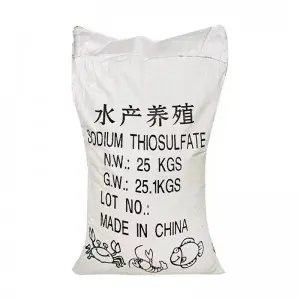



sodium chlorate crystals are easy to grow
The Ease of Growing Sodium Chlorate Crystals
Sodium chlorate (NaClO3) is a highly versatile chemical compound used in various applications, including herbicides, bleaching agents, and even in the production of chlorine dioxide for water treatment. One of the fascinating aspects of sodium chlorate is its ability to form crystals, which not only serve practical purposes but also offer an engaging experience for hobbyists and students interested in crystallography. Growing sodium chlorate crystals is relatively straightforward and serves as an excellent educational experiment to delve into the principles of crystallization and the nature of ionic compounds.
Understanding Sodium Chlorate
Sodium chlorate is an ionic compound composed of sodium ions (Na+) and chlorate ions (ClO3-). It is typically encountered as a white crystalline powder that is highly soluble in water. At room temperature, sodium chlorate has a solubility of about 42 grams per 100 milliliters of water, meaning that a considerable amount of it can be dissolved in water, which makes it an ideal candidate for crystal growing experiments.
The Process of Growing Crystals
To grow sodium chlorate crystals, one needs to follow a few simple steps that can be performed safely with the right precautions. Here’s a basic outline of the process
1. Materials Required - Sodium chlorate (available through chemical suppliers or gardening stores). - Distilled water (to avoid impurities that can hinder crystal growth). - A heat source (such as a stovetop). - A heat-resistant container (like a beaker or glass jar). - A stirring rod. - A shallow dish for the crystallization process. 2. Dissolving the Sodium Chlorate - Begin by heating a specific volume of distilled water in the heat-resistant container. - Gradually add sodium chlorate to the hot water while continuously stirring. It’s important to do this slowly to ensure that the salt fully dissolves. - Keep adding sodium chlorate until you reach the saturation point, where no more crystals dissolve, and some remain undissolved at the bottom.
3. Cooling and Crystallization - Once the solution is saturated and all the sodium chlorate is dissolved, remove it from the heat and allow it to cool slowly. The cooling process is crucial, as it helps the crystals to form. - As the solution cools, the solubility of sodium chlorate decreases, prompting the excess sodium chlorate to begin crystallizing out of the solution. - To encourage larger crystal formation, you can cover the container with a paper towel or lid to minimize evaporation and maintain stable temperature conditions.
sodium chlorate crystals are easy to grow

4. Harvesting the Crystals - After several hours or overnight, you should begin to see crystals forming. When the crystallization process is complete, carefully pour off the remaining liquid, leaving the crystals in the container. - The crystals can then be rinsed gently with a small amount of cold distilled water to remove any residual impurities.
5. Drying - Finally, allow the sodium chlorate crystals to air dry. Once dry, they can be studied or used for different educational and practical applications.
Applications and Educational Benefits
Growing sodium chlorate crystals provides more than just a visual spectacle; it serves as a hands-on method to teach important concepts in chemistry, such as saturation, solubility, and crystallization kinetics. Students can observe how temperature affects solubility, and they gain insight into the properties of ionic compounds.
Additionally, crystallization offers a unique perspective on the principles of supersaturation and dynamic equilibrium in solutions. As students witness the transition from a liquid solution to solid crystals, they gain a deeper appreciation for the complexity and beauty of chemical processes.
Conclusion
In summary, sodium chlorate crystals are not only easy to grow but also provide an enriching educational experience. This simple yet fascinating process allows individuals to explore the world of chemistry and crystallography while engaging in hands-on experimentation. Whether for educational purposes or simply as a hobby, growing sodium chlorate crystals can be an enjoyable and informative journey into the science of materials.
-
Why Sodium Persulfate Is Everywhere NowNewsJul.07,2025
-
Why Polyacrylamide Is in High DemandNewsJul.07,2025
-
Understanding Paint Chemicals and Their ApplicationsNewsJul.07,2025
-
Smart Use Of Mining ChemicalsNewsJul.07,2025
-
Practical Uses of Potassium MonopersulfateNewsJul.07,2025
-
Agrochemicals In Real FarmingNewsJul.07,2025
-
Sodium Chlorite Hot UsesNewsJul.01,2025










